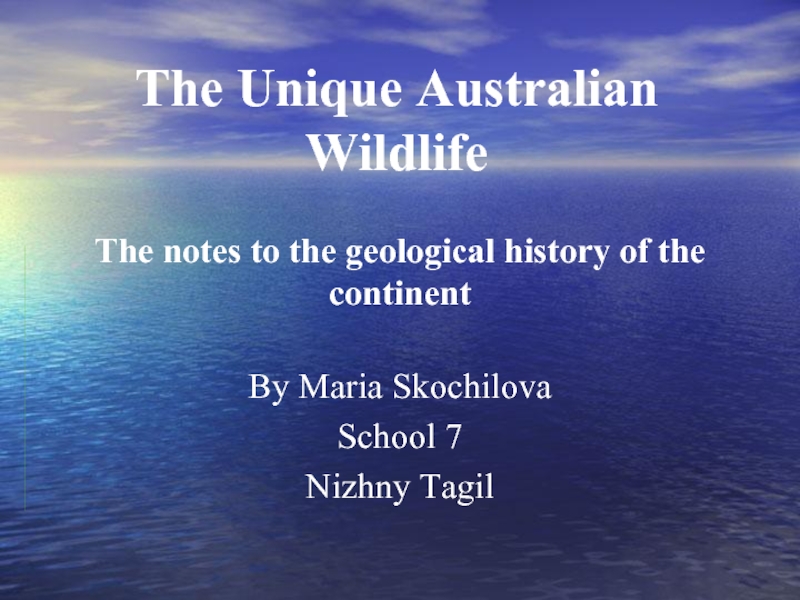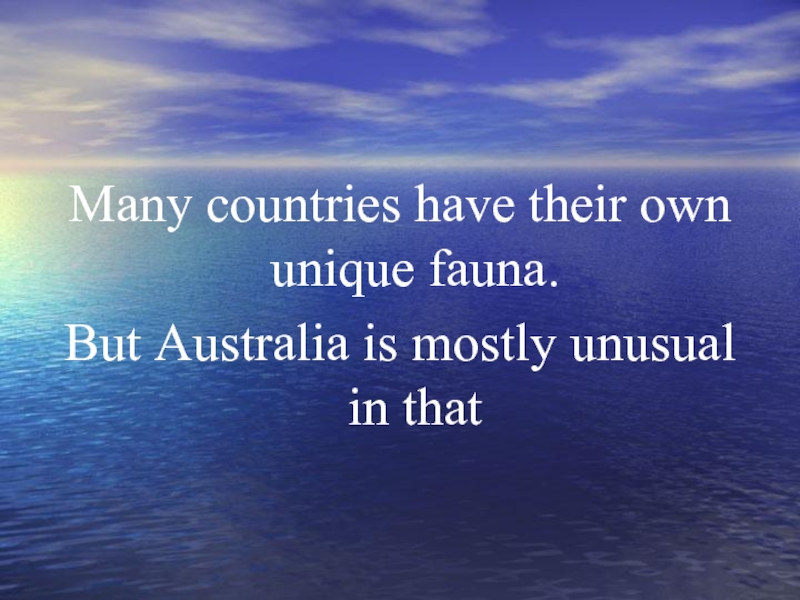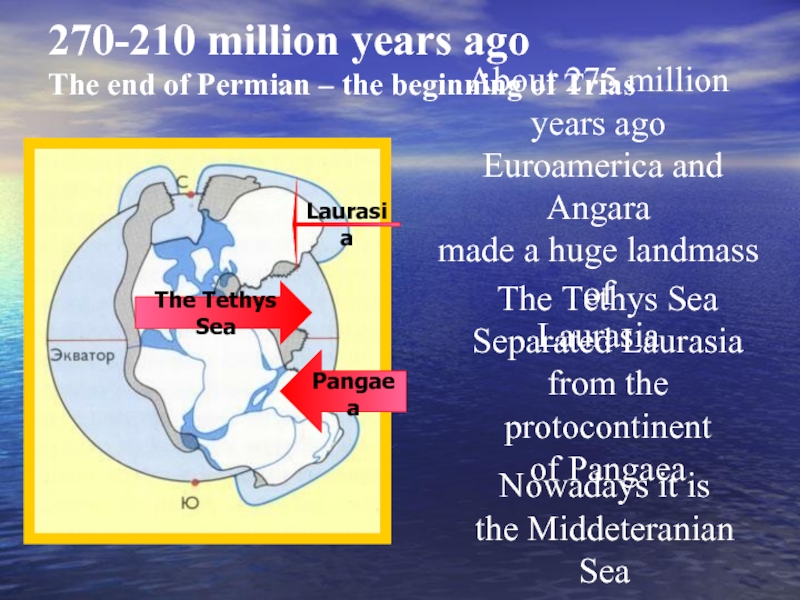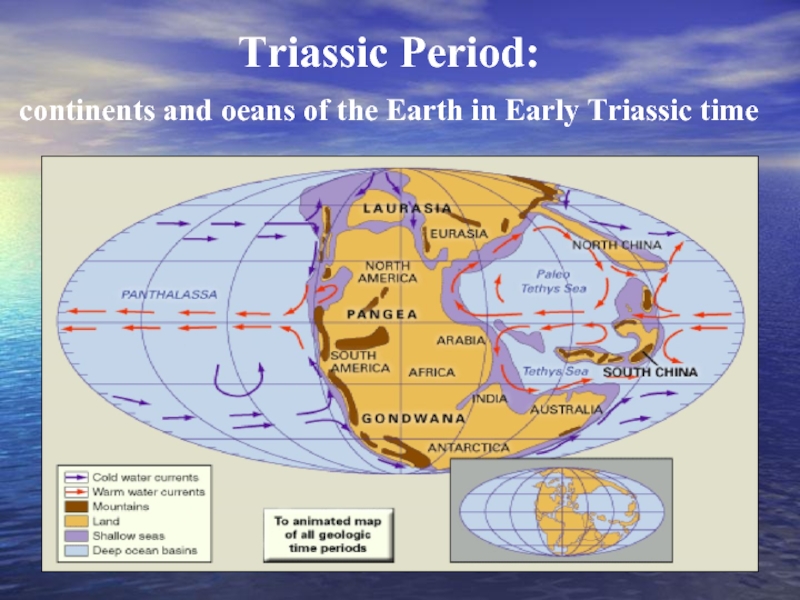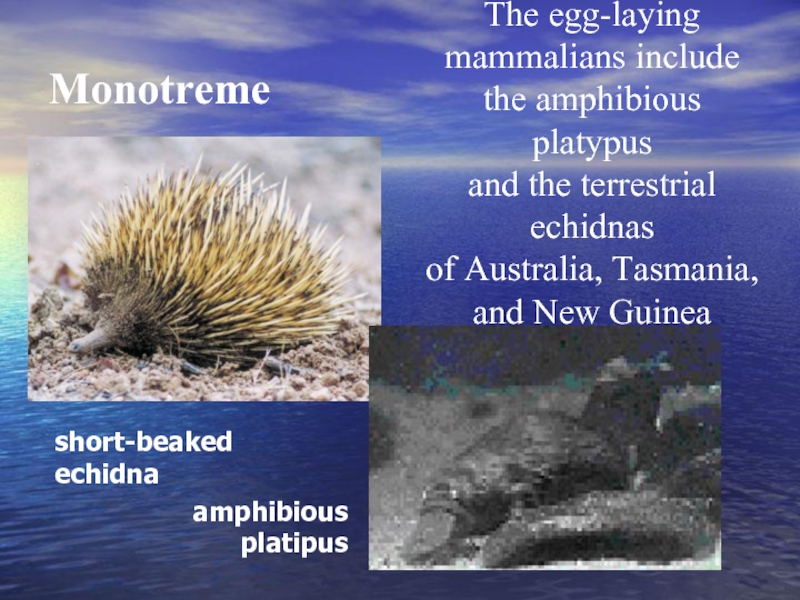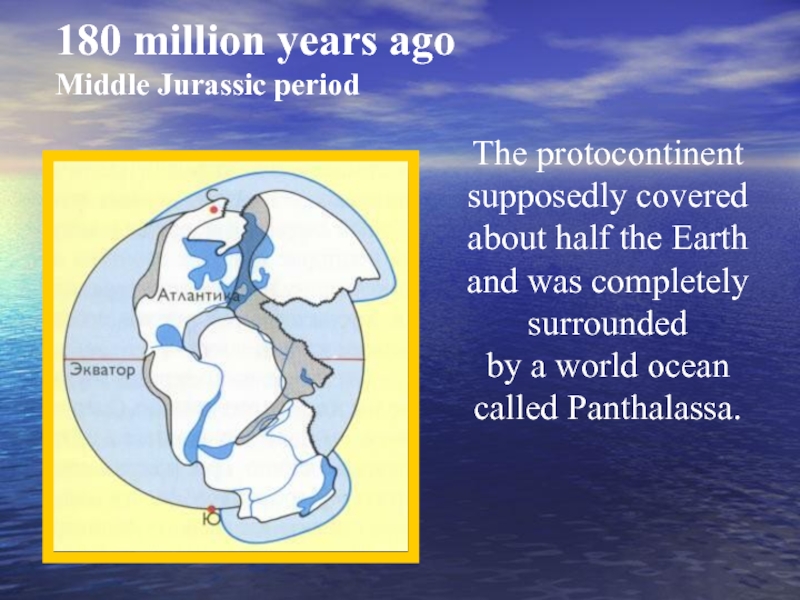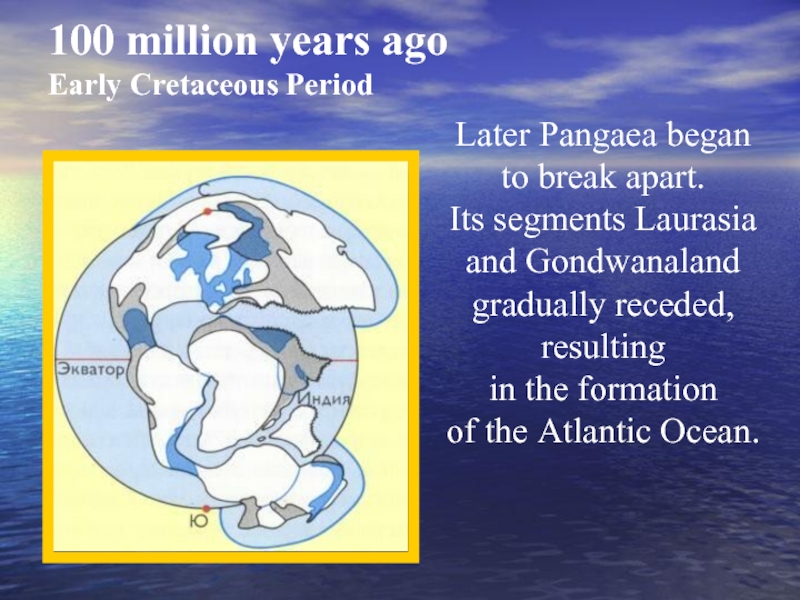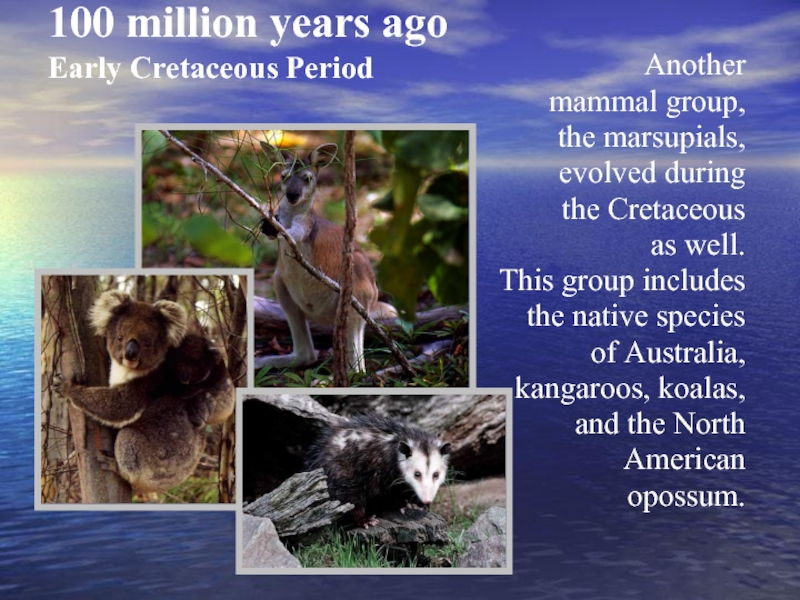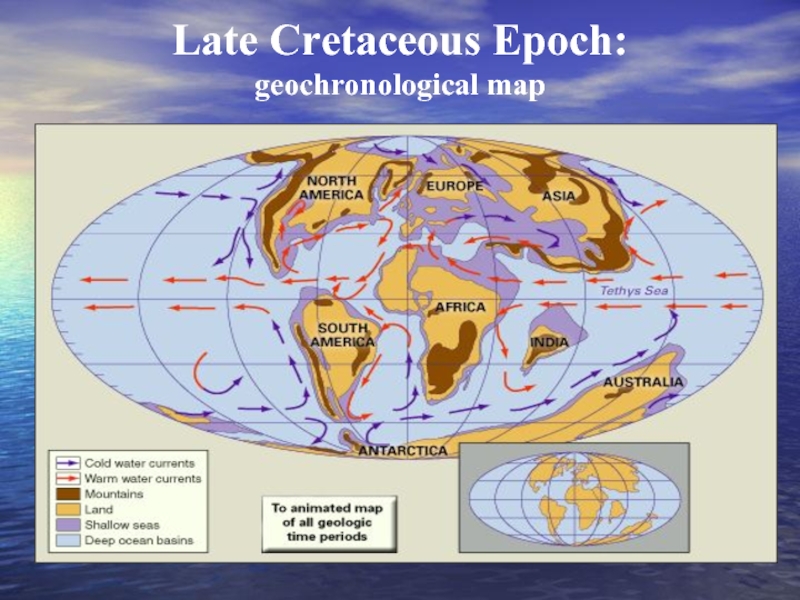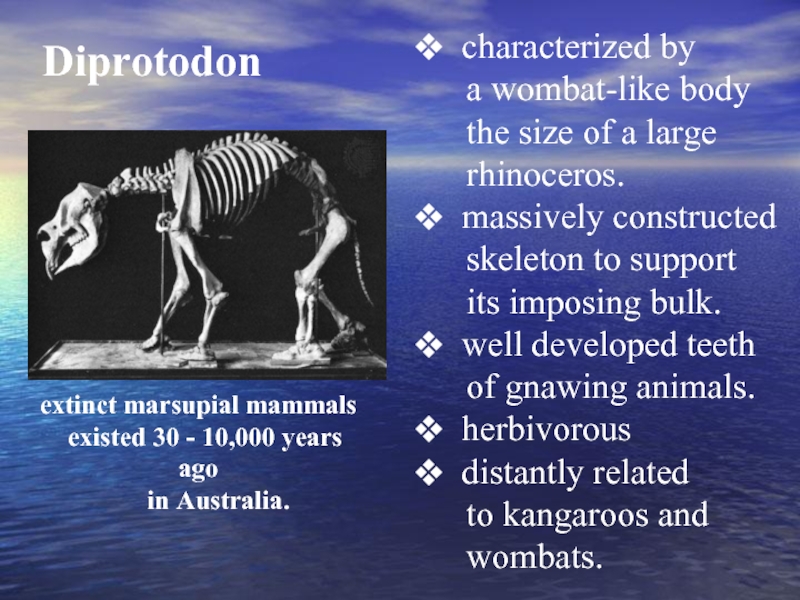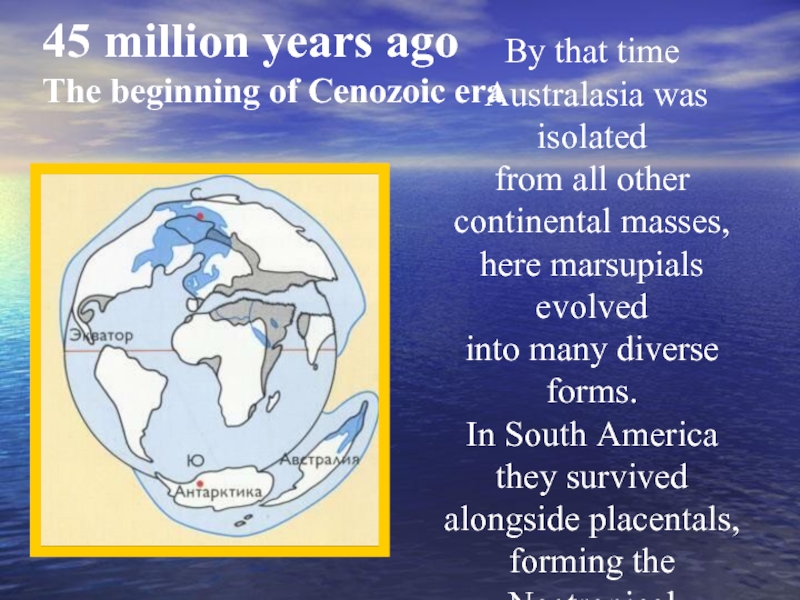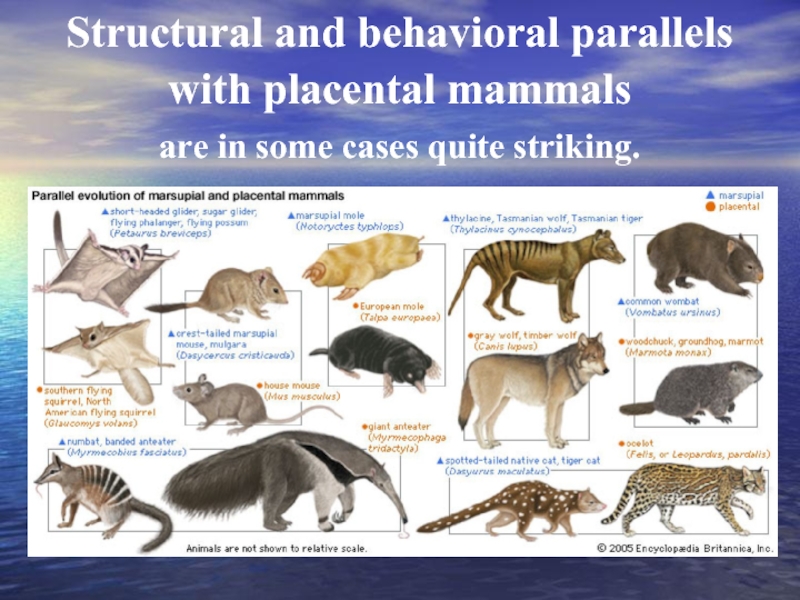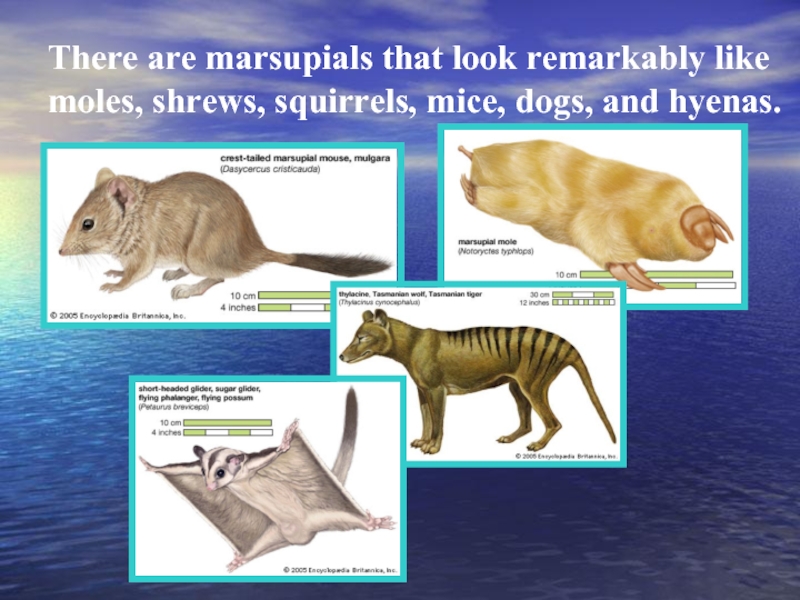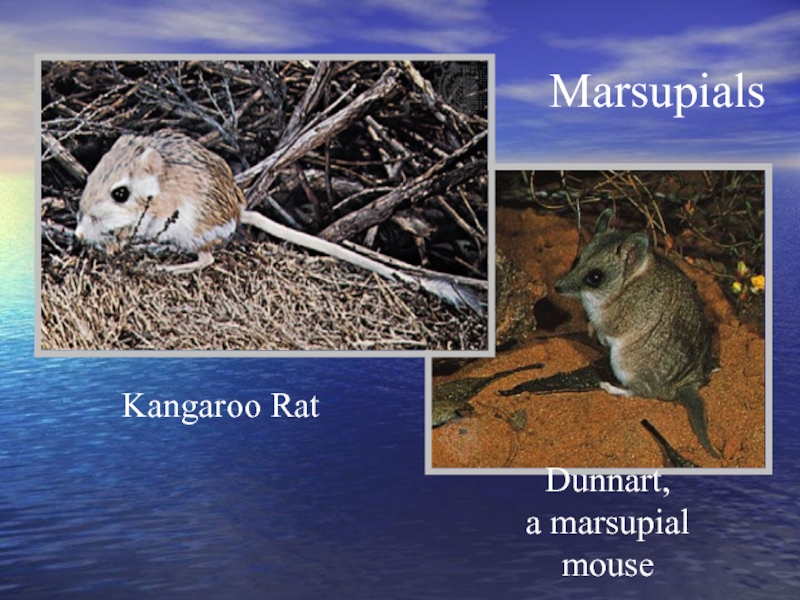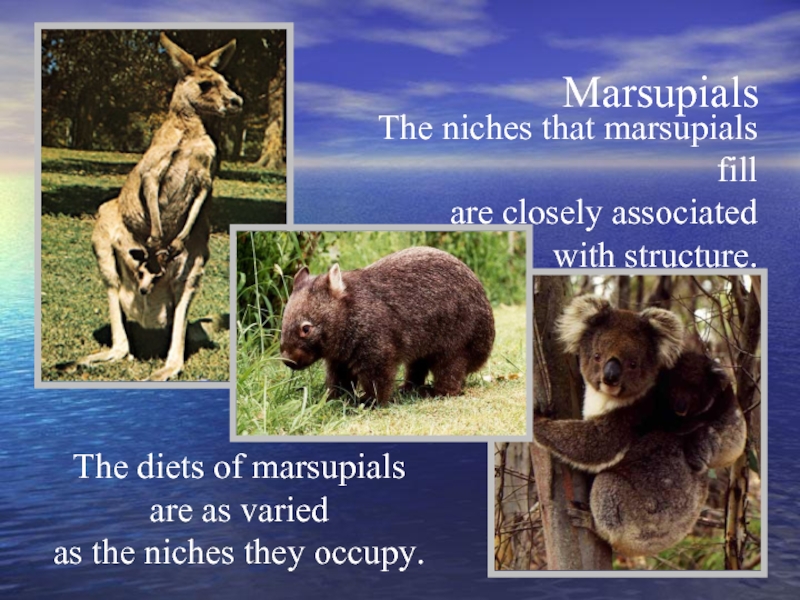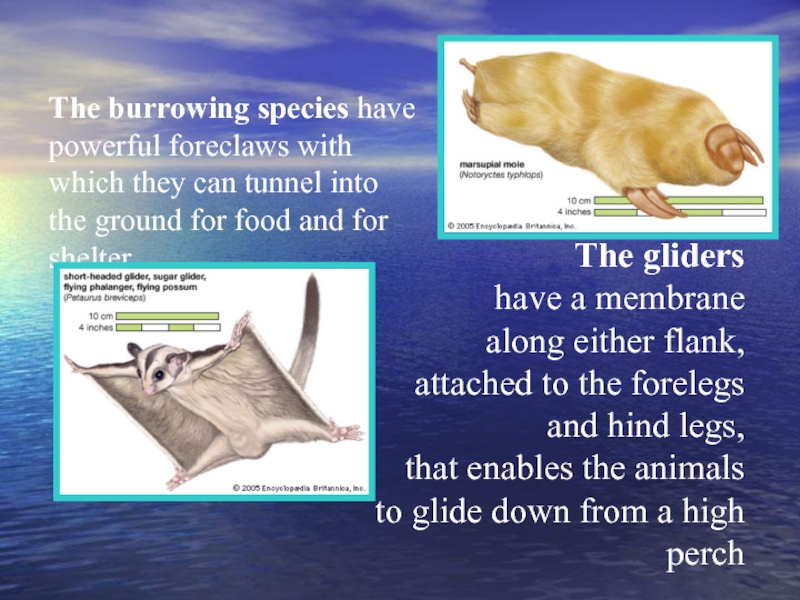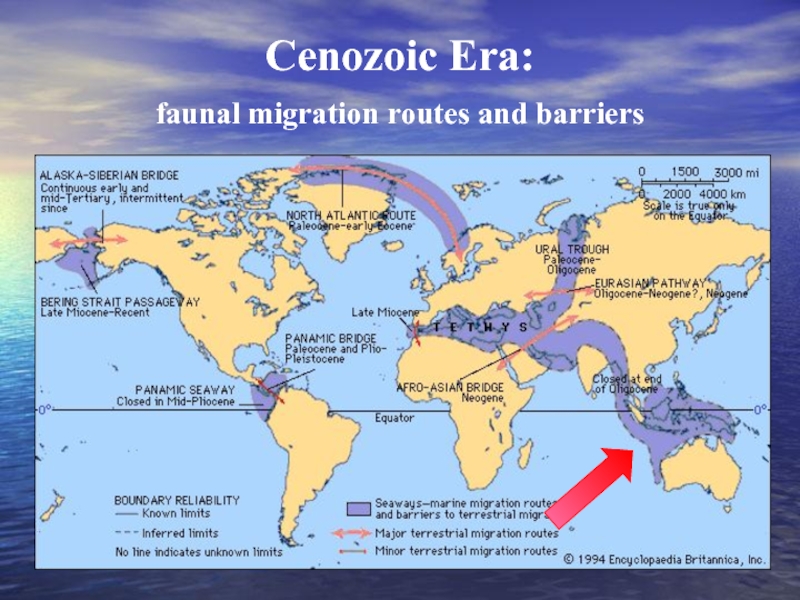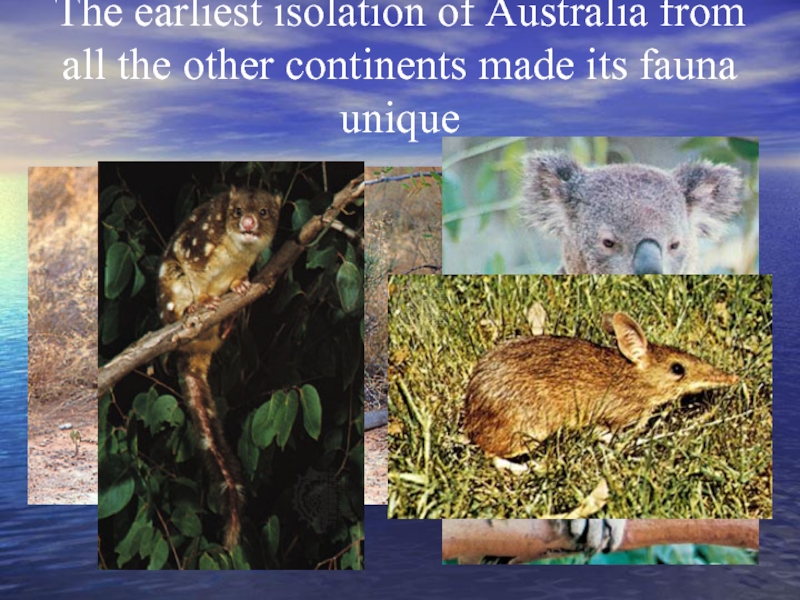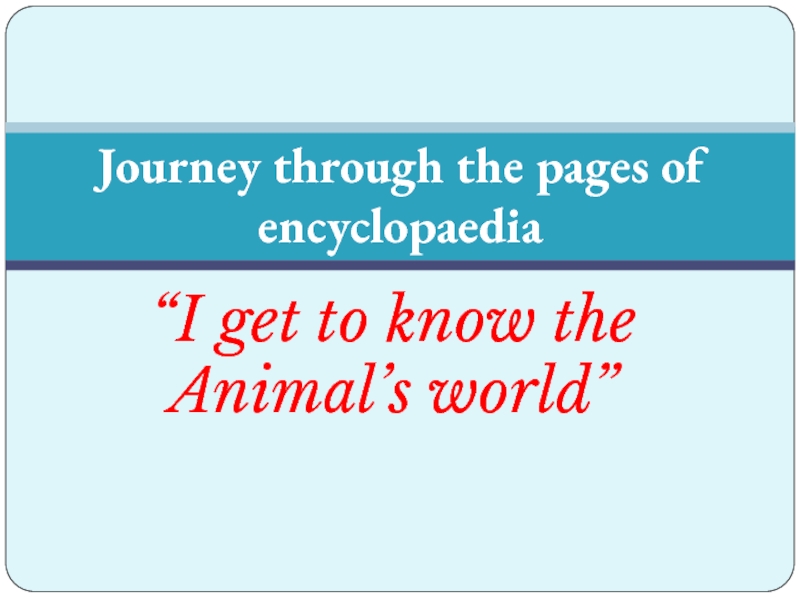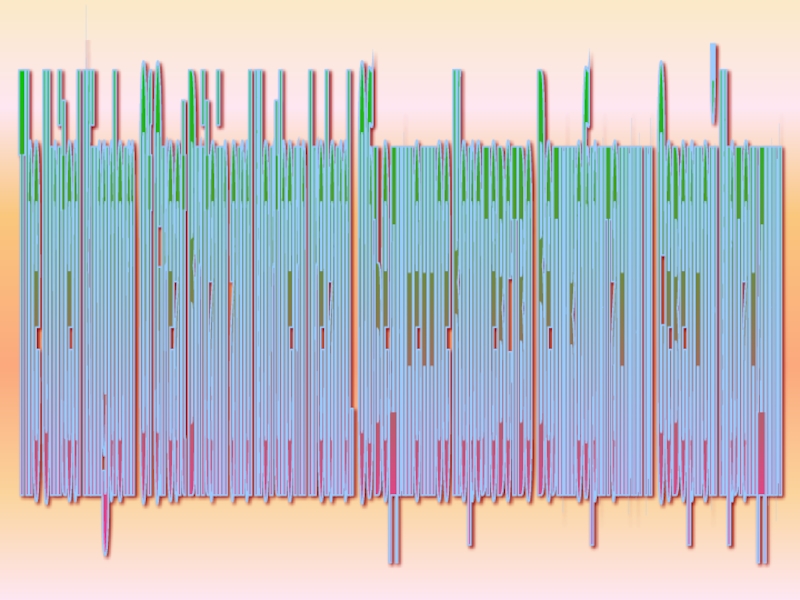Разделы презентаций
- Разное
- Английский язык
- Астрономия
- Алгебра
- Биология
- География
- Геометрия
- Детские презентации
- Информатика
- История
- Литература
- Математика
- Медицина
- Менеджмент
- Музыка
- МХК
- Немецкий язык
- ОБЖ
- Обществознание
- Окружающий мир
- Педагогика
- Русский язык
- Технология
- Физика
- Философия
- Химия
- Шаблоны, картинки для презентаций
- Экология
- Экономика
- Юриспруденция
The Unique Australian Wildlife
Содержание
- 1. The Unique Australian Wildlife
- 2. Many countries have their own unique fauna.But Australia is mostly unusual in that
- 3. 320-270 million years ago Permo-Carboniferous Age If
- 4. 270-210 million years ago The end
- 5. 270-210 million years ago The end
- 6. Triassic Period: continents and oeans of the Earth in Early Triassic time
- 7. MonotremeThe egg-laying mammalians include the amphibious platypusand
- 8. 180 million years ago Middle Jurassic
- 9. 180 million years ago Middle Jurassic
- 10. Late Jurassic Epoch: geochronological map
- 11. 100 million years ago Early Cretaceous Period
- 12. Two important groups of modern mammals evolved
- 13. 100 million years ago Early Cretaceous Period
- 14. Late Cretaceous Epoch: geochronological map
- 15. 70 million years ago The end of
- 16. Diprotodon characterized by a wombat-like body
- 17. 45 million years ago The beginning of
- 18. Structural and behavioral parallels with placental mammals are in some cases quite striking.
- 19. There are marsupials that look remarkably like moles, shrews, squirrels, mice, dogs, and hyenas.
- 20. The koala and the kangaroo are the most well-known marsupials.
- 21. MarsupialsLong-nosed bandicootSpotted-tailed quoll, or native cat
- 22. MarsupialsVirginia, or opossum
- 23. MarsupialsRed kangaroo –WallabyWestern grey kangaroo
- 24. MarsupialsDunnart, a marsupial mouseKangaroo Rat
- 25. MarsupialsWombatTasmanian Devil
- 26. MarsupialsThe niches that marsupials fill are closely
- 27. The burrowing species have powerful foreclaws with
- 28. Cenozoic Era: faunal migration routes and barriers
- 29. The earliest isolation of Australia from all the other continents made its fauna unique
- 30. LiteratureТ. Клементьева, Дж. Шэннон Happy English-3 –
- 31. Скачать презентанцию
Many countries have their own unique fauna.But Australia is mostly unusual in that
Слайды и текст этой презентации
Слайд 3320-270 million years ago
Permo-Carboniferous Age
If we had observed
the Earth surface
from space at that time,
we would have seen
quite
the other pictureСлайд 4270-210 million years ago The end of Permian – the
beginning of Trias
About 275 million years ago
Euroamerica and
Angara made a huge landmass of
Laurasia
Laurasia
The Tethys Sea
Separated Laurasia
from the protocontinent
of Pangaea
Pangaea
The Tethys Sea
Nowadays it is
the Middeteranian Sea
Слайд 5270-210 million years ago The end of Permian – the
beginning of Trias
On land the vertebrates are represented in the
Triassic by amphibians and reptiles.The first true mammals, which were very small, are supposed to appear in the Late Triassic.
Слайд 7Monotreme
The egg-laying
mammalians include
the amphibious platypus
and the terrestrial echidnas
of Australia, Tasmania,
and New Guinea
short-beaked echidna
amphibious platipus
Слайд 8180 million years ago
Middle Jurassic period
The protocontinent
supposedly covered
about half the Earth
and was completely
surrounded
by a
world ocean called Panthalassa.
Слайд 9180 million years ago
Middle Jurassic period
Dinosaurs and other reptiles
emerged to dominate the land, sea, and sky.
The first birds
and new varieties of reefbuilding and other invertebrate faunas, provided Jurassic life with added complexity.Слайд 11100 million years ago
Early Cretaceous Period
Later Pangaea began
to break
apart.
Its segments Laurasia
and Gondwanaland
gradually receded,
resulting
in
the formation of the Atlantic Ocean.
Слайд 12Two important groups of modern
mammals evolved
during the Cretaceous.
100
million years ago
Early Cretaceous Period
Cretaceous placentals, smaller than those
of
present-day ones, were poised to take over the terrestrial environments
as soon as the dinosaurs vanished.
Слайд 13100 million years ago
Early Cretaceous Period
Another
mammal group,
the marsupials,
evolved during
the Cretaceous
as well.
This group includes
the
native speciesof Australia,
kangaroos, koalas,
and the North
American
opossum.
Слайд 1570 million years ago
The end of Cretaceous Period
The Late Cretaceous
record is much
more complete.
It is known, for instance,
that during the Late
Cretaceous
many dinosaur types
lived in relationships
like the present-day
terrestrial mammals.
Слайд 16Diprotodon
characterized by
a wombat-like body
the size of a
large
rhinoceros.
massively constructed
skeleton to support
its imposing
bulk. well developed teeth
of gnawing animals.
herbivorous
distantly related
to kangaroos and
wombats.
extinct marsupial mammals
existed 30 - 10,000 years ago
in Australia.
Слайд 1745 million years ago
The beginning of Cenozoic era
By that time
Australasia was isolated
from all other
continental masses,
here marsupials
evolved into many diverse forms.
In South America
they survived
alongside placentals,
forming the Neotropical
mammalian fauna.
Слайд 18Structural and behavioral parallels with placental mammals are in some
cases quite striking.
Слайд 19There are marsupials that look remarkably like moles, shrews, squirrels,
mice, dogs, and hyenas.
Слайд 26Marsupials
The niches that marsupials fill
are closely associated
with structure.
The diets of marsupials
are as varied
as the niches
they occupy. Слайд 27The burrowing species have powerful foreclaws with which they can
tunnel into the ground for food and for shelter
The
gliders have a membrane
along either flank,
attached to the forelegs
and hind legs,
that enables the animals
to glide down from a high perch
Слайд 30Literature
Т. Клементьева, Дж. Шэннон Happy English-3 – Обнинск: Титул, 2005
Д.
Эттенборо Живая природа – М.: Мир книги, 2001
Britannica 2007
Ultimate Referense Suite DVD - энциклопедия, англоязычное издание: www.britannica.co.uk
Теги
